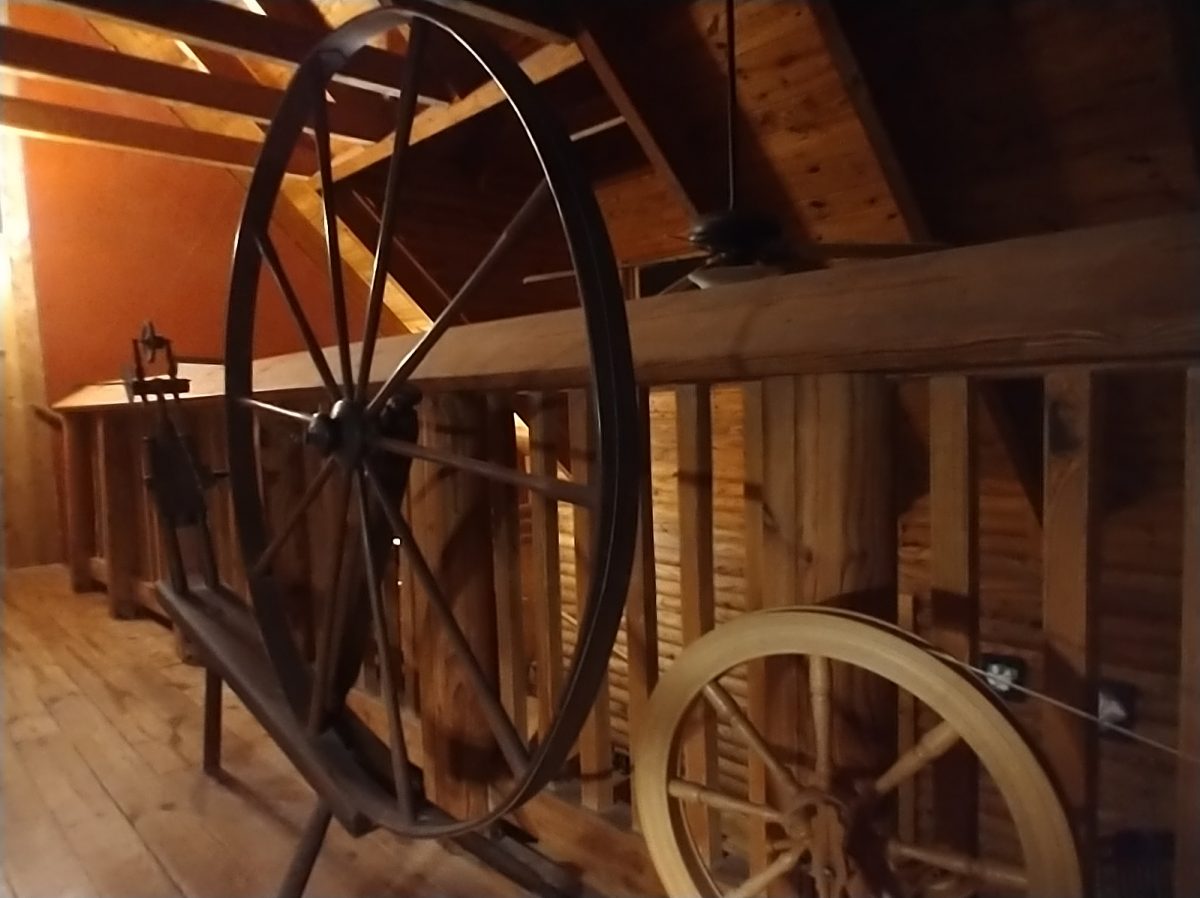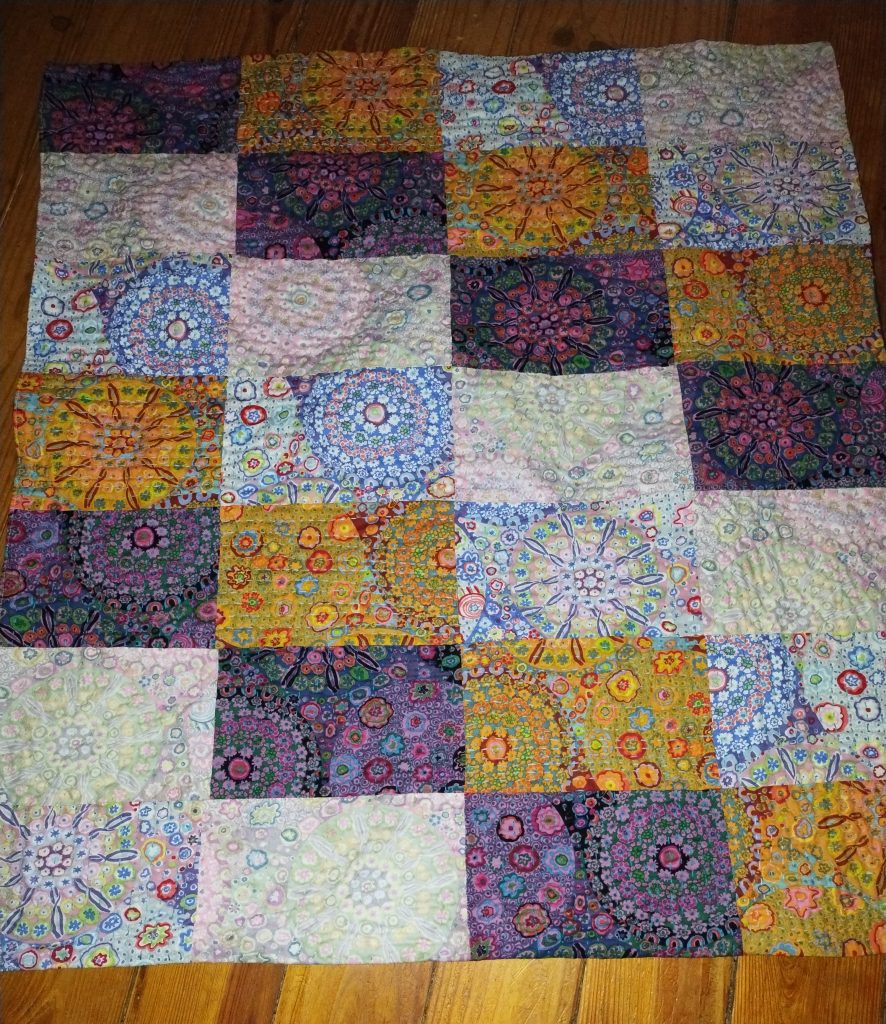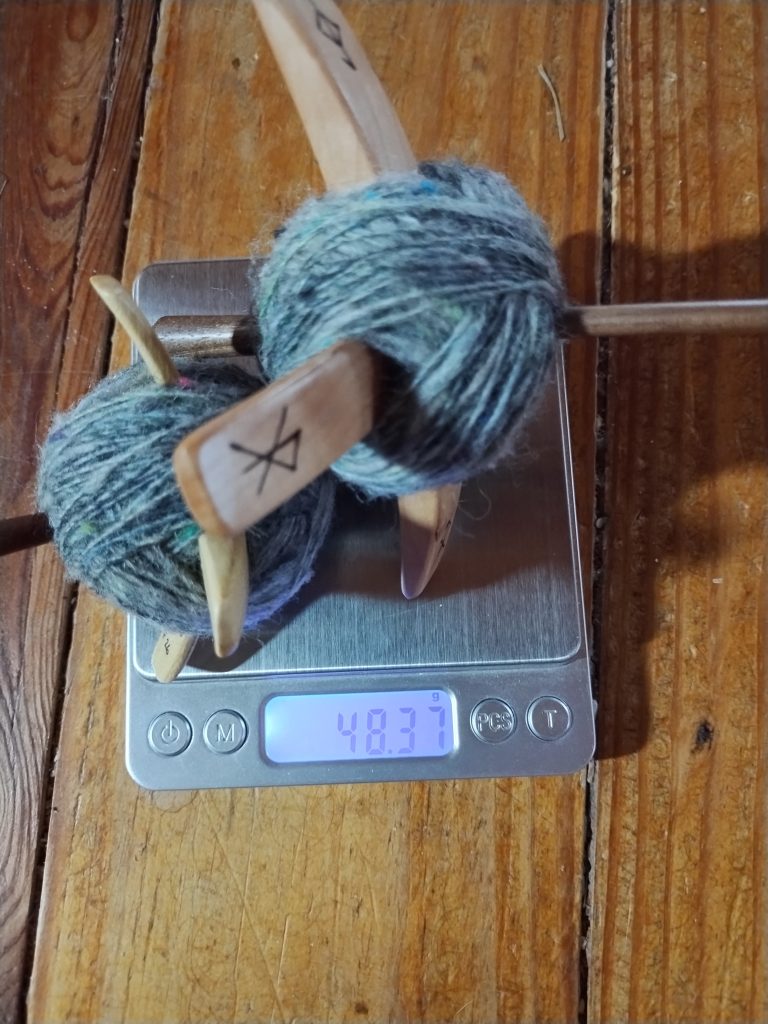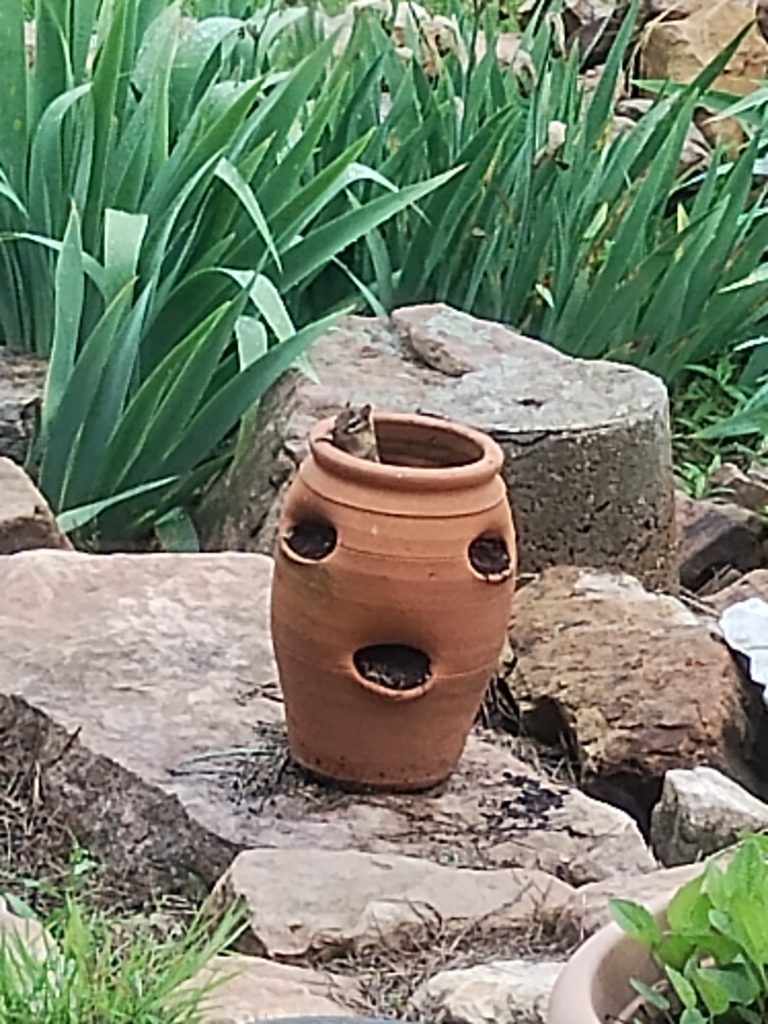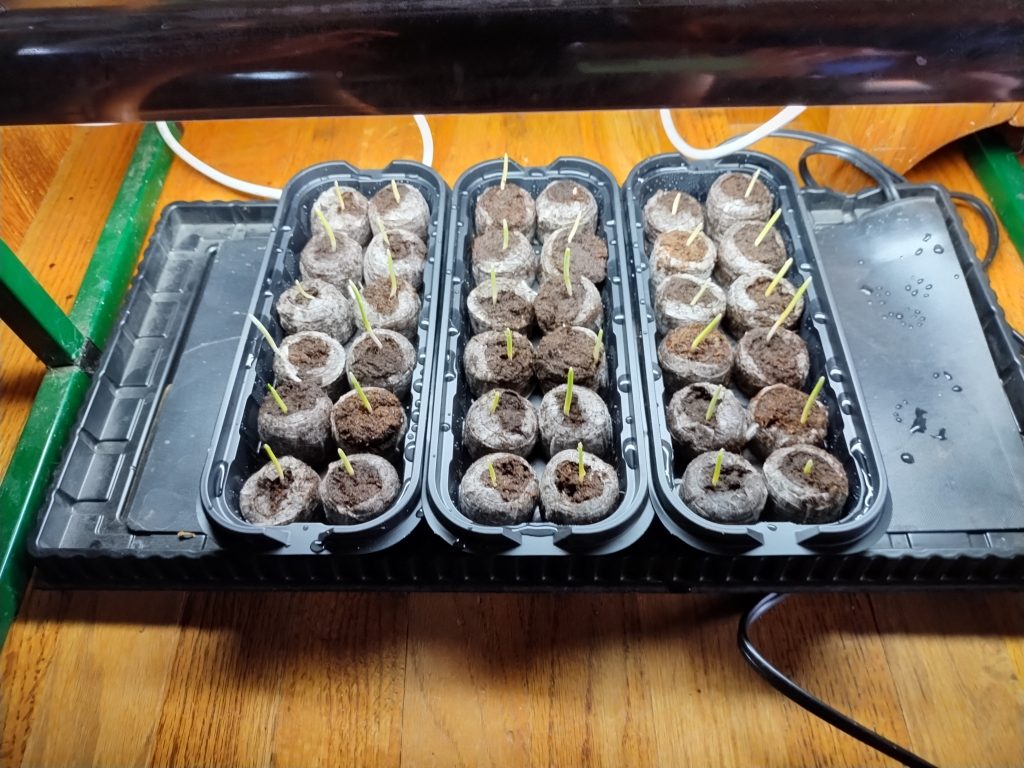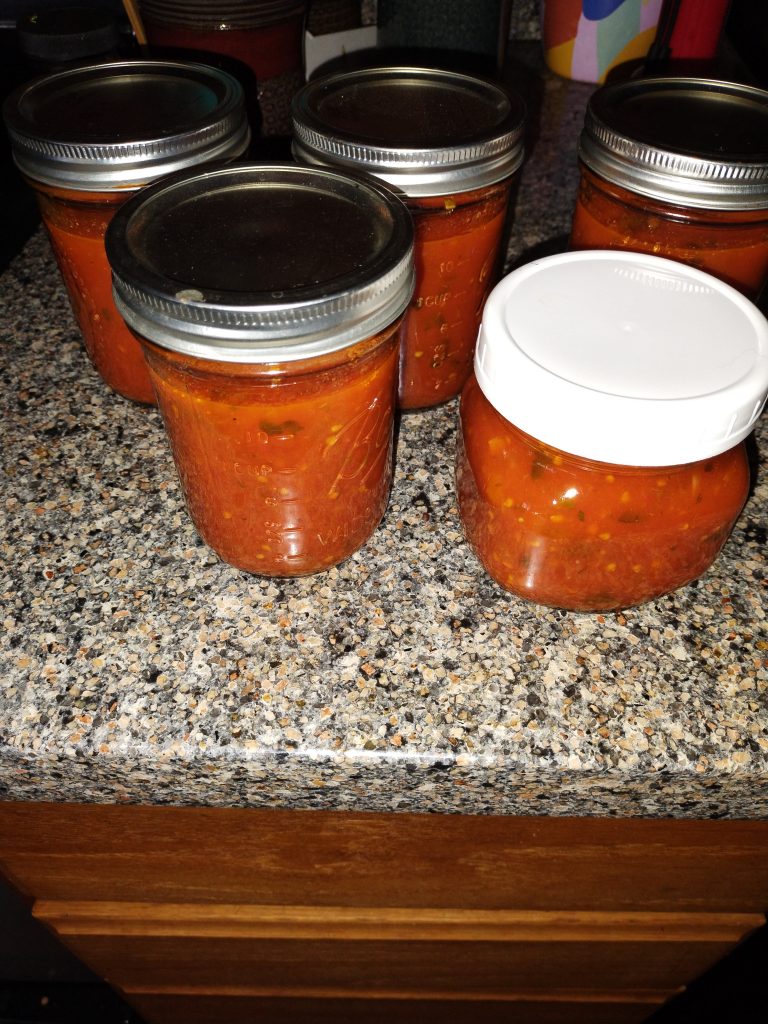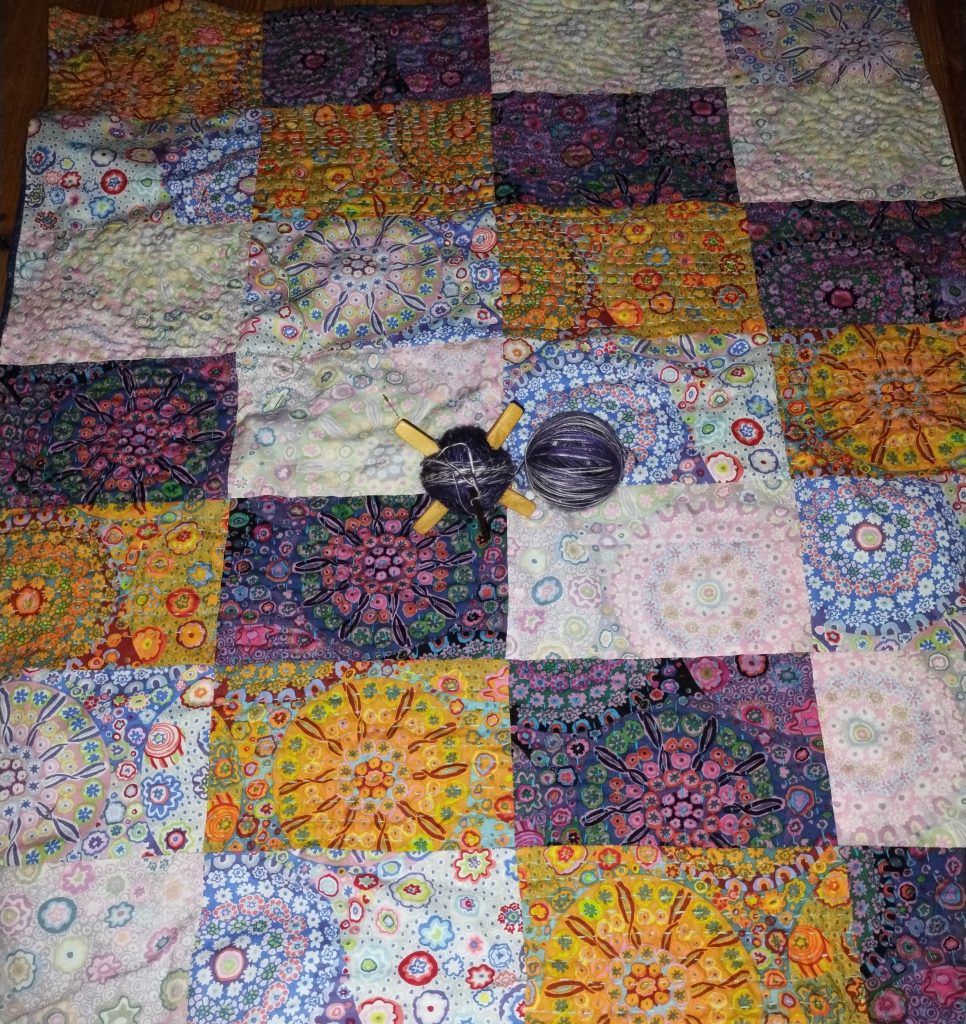This has been a week full of youth. Tuesday, Son2 and his family arrived with almost 2/3 of our grandkids. Lots of food, lots of noise, lots of hugs and snuggles. And they brought their beautiful young German Shepherd, so lots of puppy love. It is so cool to see the developmental changes in the younger kiddos. Going from throwing the blocks to the 4 year old intent on putting together the 4 sixteen piece puzzles and wanting to do it himself. Son 2 and I had to evict some mice from their RV stored here, so they slept in the house while we cleaned and trapped. The next day we worked to replace the water heater in the RV as the old one ruptured a while back in cold weather. This was a fun challenge as it wasn’t supposed to rain, but it started just as we opened the hole in the side of the RV. The big table umbrella came to our rescue , propped on the roof with me holding it in place with one hand while offering the other hand as an assistance.
The next few days were used to wash sheets and remake the beds used by them and also the linens from the RV that had been “miced.” Their linens are now sealed in rigid totes until they need them again. Any dishes that were not put away in the RV were also sanitized in our dishwasher and put away. And daily trap checks are being done to make sure we got them all.
There are often derogatory comments made about young adults. We loaned our scaffolding to a young couple that are friends of friends. As soon as they borrowed it, offers to do anything to help us were made. The wife has house and dog sat for us a couple of times, but still they asked for jobs to help. A couple of weeks ago, I mentioned that I wanted to redo the chicken run but had to get the supplies. In the meantime, I decided to create a covered tunnel around most of the vegetable garden inside the fence so they could keep the weeds and bugs at bay. I had begun that task, but found pounding in T post to be challenging, so I quit with only about 12-15 feet done. There was a lot of old fence wire in the back of the barn. Early this week, plans were made for her and her husband to come assist me. There is now a tunnel around all of the garden except the gate area and enough room to the left of the gate to get to the wide path in the garden. And it is covered. Then the berry half barrels were moved, cardboard from daughter’s recent move laid every where there isn’t a tunnel or garden box, the half barrels put back in place on top where they had been, then most of a round bale of last year’s hay spread to cover all paths and all the cardboard as well as thick layer in the chicken run. We worked together for about 3.5-4 hours and did more work that I would have gotten done in weeks. All I have to do now is keep the beds weeded and that is very doable. They are going to come another weekend and help me dismantle the chicken tractor that blew over and broke a few years ago and get rid of the rotting wood, roll the hardware cloth to store. They were terrific and so gracious with their strength and energy.
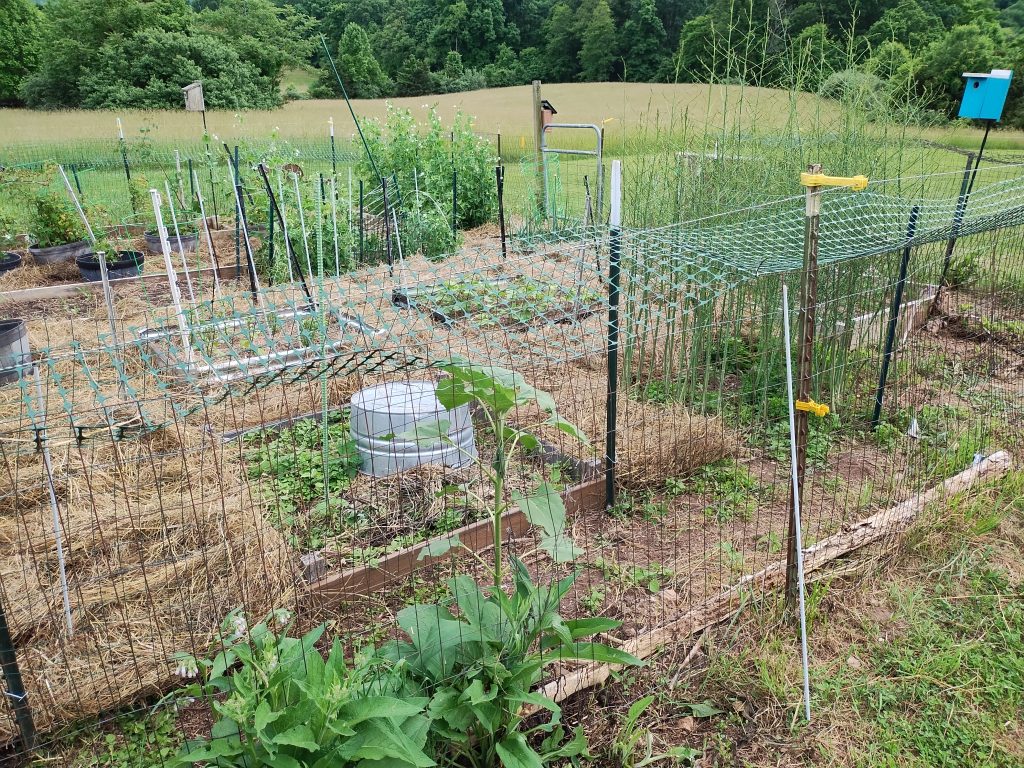
And the offer to come help anytime I need assistance on jobs that are more easily done with help is so welcome.
The only error was not cutting an opening from the tunnel I had put in to the one we created today, but I think I have come up with a solution. Next up is creating a structure around the box where the galvanized tub is resting to become the compost piles.
I am tired from the week, but rejuvenated by all of the youth in our lives this week. Tomorrow, daughter and I will join forces to make empanadas for dinner with her family and us. It is always fun to work in the kitchen with her.
